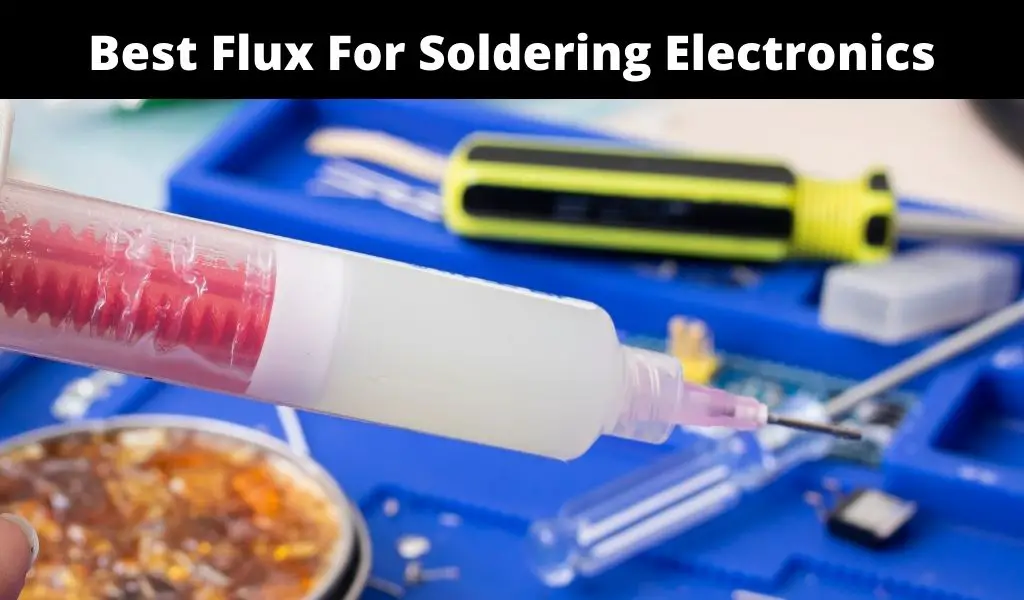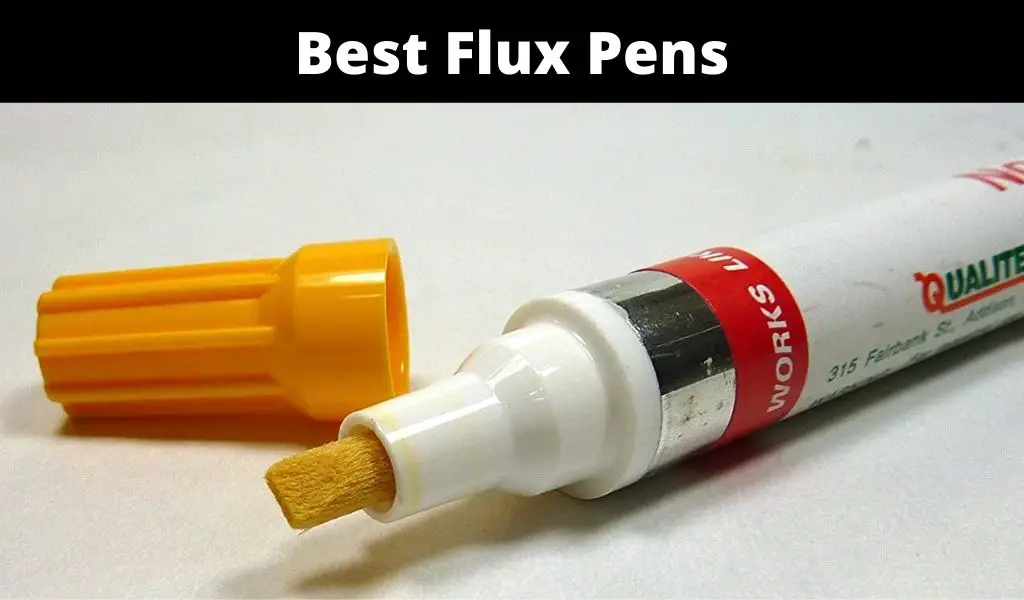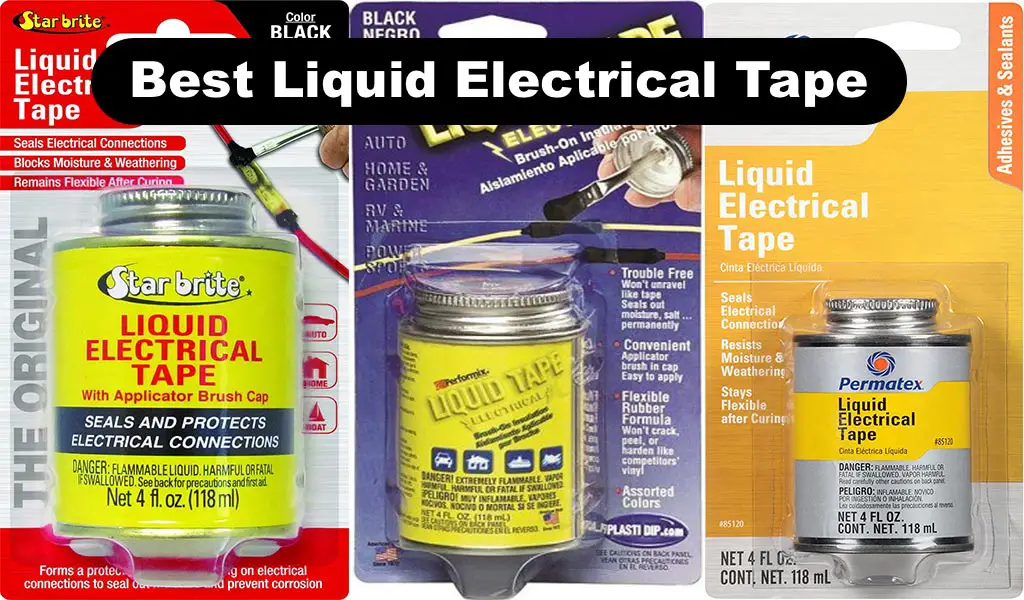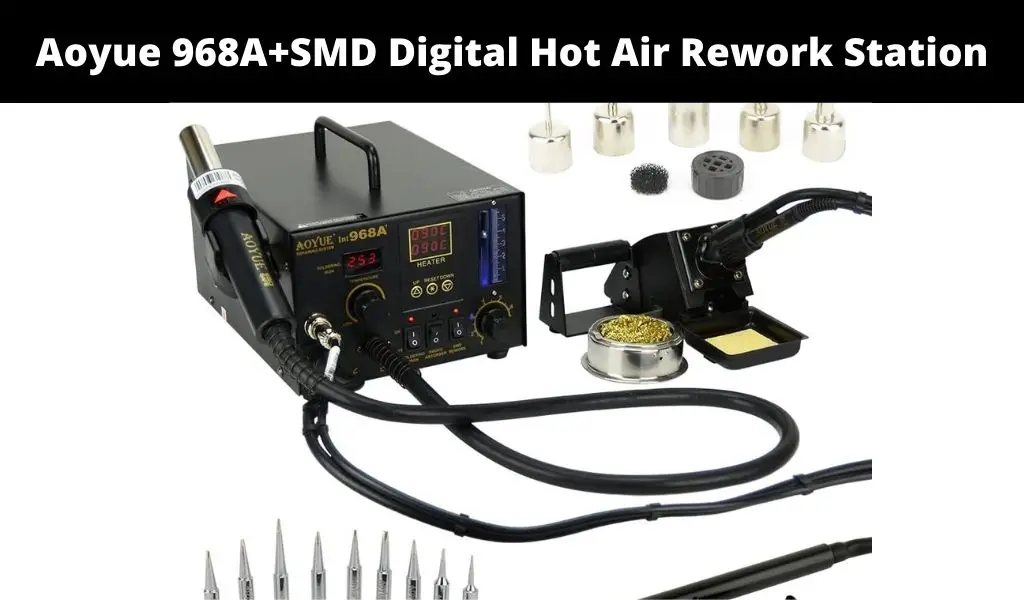If you work with electronics, you know that soldering is an essential part of your job. However, improper soldering can lead to bad joints or even no joints at all. To help increase the likelihood of a good solder, professionals recommend the use of a flux.
What is Flux in Soldering?
When solder is melted down to form a joint between two opposing metal surfaces, it crease what is referred to as a metallurgical bond. In other words, the solder chemically reacts with other metal surfaces to create a joint. For a solid bond, there are two main things you need.
The first is a solder that is compatible, in a metallurgical sense, with the types of metals you are bonding. Secondly, the metal surfaces that are to be jointed should be free of oxides, dust, and other such particles that can damage the integrity of the solder joint. While cleaning metal surfaces can easily remove the dust and grime, oxides are a different story.
Oxides
When a metal surface comes into contact with oxygen, it creates a chemical reaction. This reaction creates metal oxides on the surface of your material and can impact conductivity, current flow, and your solder. Rust on iron, for example, is a visible iron oxide created by this process. Tin, aluminum, copper and almost all other metal surfaces are susceptible to oxidation. When you metals are coated in oxides, soldering can become difficult, if not impossible.
We live in a world supported by oxygen, so you will never be able to have a metal surface completely devoid of all oxides. When you solder, you apply high heat to the area. Oxidation occurs much faster when this type of heat is applied. By using flux, however, on the metal surface, you can prevent the growth of additional oxides while applying heat to your solder joint.
What Flux Does
The flux you choose is a chemical component that is vital to a successful solder. Flux should provide three key things. First, it should chemically clean your metal surfaces, help with the flow-ability of your filler materials over the base metals, and provide a protective barrier between the metal and your soldering heat.
Second, flux should assist with the heat transfer between the metal surface and your soldering heat source. Third, your flux should help to reduce and remove any surface metal oxides currently sitting on your metal surfaces.
Types of Flux for Soldering
In certain cases, the flux that is typically included within the core of a solder wire is good enough. However, there are certain situations where the use of an additional flux is beneficial. This includes things like surface mount soldering as well as de-soldering.
Regardless of the reason you are using a flux, the most ideal product is the one that is the least acidic but still works on any oxidation on the surface of your component. With that, it is important to point out that there are different types of flux to choose from.
Rosin Flux
One of the oldest types of flux is based off of rosin. (Rosin is a refined and purified pine sap.) While rosin flux still exists today, it contains a blend of fluxes instead of just pure pine sap. This helps to optimize the flux and increase its performance and characteristics. One of the great features of a rosin flux is that it potent and acidic only when in its liquid (hot) state. When it cools, however, it becomes solid and inert.
Because it becomes inert when cold, rosin flux can be left in place when your soldering is complete. (That is unless the printed circuit board (PCB) or other surface heats to the point of melting the resin flax while in use. Should this occur, the resin can actually begin to eat away at the connection.) While a resin flux does become inert, it is always recommended that you remove it once your solder is done anyway. Rosin flux can be easily removed with alcohol.
Organic Acid Flux
Organic acid (OA) flux is extremely popular. OA flux is actually a water soluble flux. OA fluxes use common, but weak, acids. This includes things like citric, lactic, or stearic acids. These weak acids are then combined with other solvents, such as isopropyl alcohol or water.
The phrase “weak acids” may make these fluxes seem weaker than other types. However, OA fluxes are stronger than resin versions. The acids in an OA flux work to clean oxides from metal surfaces much more quickly.
Because these fluxes are water soluble, they are easier to clean up and remove. In fact, they can be removed with just water. Unlike resin fluxes, which become inert and could potentially be left on the surface of your PCB, OA products must be removed. (OA flux is electronically conductive and can affect the performance of a PCB if left behind.)
Inorganic Acid Flux
If an OA flux uses “weak acids”, an inorganic flux uses much stronger ones. Typically, inorganic fluxes will use a blend that includes an acid like hydrochloric acid, zinc chloride, or ammonium chloride. Inorganic must be removed from your metal surfaces after use.
Because of the stronger acids, inorganic flux can be extremely corrosive if left behind after use. This can destroy your solder joint. (Inorganic flux should never be used for electronic assemblies or electrical work due to its highly corrosive nature!)
A Note on Solder Fumes
Fluxes contain many chemical compounds. When soldering, the smoke and fumes that are emitted are dangerous. In fact, inhaling soldering fumes has been linked to asthma. Make sure you solder only in a well ventilated area. Additionally, it is important to take proper safety measures to ensure you remove any fumes or chemicals from your skin. This includes wearing a mask, thoroughly washing your hands and face, and avoiding eating or drinking in an area where soldering is performed.
In addition to this, some soldering fluxes will include the phrase “RoHS compliant.” RoHS is short for “Restriction of Hazardous Substances.” RoHS, which came from the European Union’s Directive 2002/95/EC, restrict the use of certain materials that have been deemed hazardous when used in and for electrical and electronic products.
So now, you understand the importance of flux as well as the different types available on the market. Let’s take a look at some of the most highly recommended fluxes available on the market today.
Top 5 The Best Flux for Soldering Electronics
- MG Chemicals No Clean Flux Paste (8341-10ML).
- CMT Rosin Soldering Flux Paste.
- SRA Soldering Products Rosin RMA Soldering Flux Pen.
- MG Chemicals Liquid Rosin Flux.
- CAIG Laboratories DeoxIT Rosin Solder Flux.
| # | Image | Title | Price | Prime | Buy |
|---|---|---|---|---|---|
| Top1 | MG Chemicals No Clean Flux Paste (8341-10ML) | PrimeEligible | Buy Now | ||
| 2 |  | CMT Rosin Soldering Flux Paste | PrimeEligible | Buy Now | |
| 3 | SRA Soldering Products Rosin RMA Soldering Flux Pen | PrimeEligible | Buy Now | ||
| 4 |  | MG Chemicals Liquid Rosin Flux | Prime | Buy Now | |
| 5 |  | CAIG Laboratories DeoxIT Rosin Solder Flux | Prime | Buy Now |
1- MG Chemicals No Clean Flux Paste (8341-10ML)
Prices pulled from the Amazon Product Advertising API on:
Product prices and availability are accurate as of the date/time indicated and are subject to change. Any price and availability information displayed on [relevant Amazon Site(s), as applicable] at the time of purchase will apply to the purchase of this product.
MG Chemicals is a well known brand in the electronics world. Their No Clean Flux Paste is a rosin-based paste you apply through the use of a syringe dispenser. (In fact, it comes preloaded in the syringe for easy and precise application.) It provides instant wetting and is compatible with both leaded and lead-free soldering applications as well as with conventional Sn/Pb alloys.
Because the MG Chemicals No Clean Flux Paste is rosin-based, any residue that remains after soldering is non-corrosive and non-conductive. Rosin is naturally moisture and fungus resistant as well. MG Chemicals No Clean Flux Paste is RoHS compliant.
Pros
Because this is a paste and not a liquid, users have praised it’s sty-in-place application. Once the heat is applied during soldering, however, it quickly melts and spreads where needed. Even though the paste is said to not need cleaning, users recommend you still remove any remaining residue with 99% alcohol as it can be sticky.
Cons
While the pre-loaded syringe is a nice feature, some users have noted that the thick flux is very hard to actually dispense. Some reviewers even said they had to use two hands just to depress the plunger! Because of the pressure you have to use to eject the paste from the syringe, some users have stated that they accidently end up squirting out too much. (A work around provided by one user was to actually squirt the paste into a secondary syringe that will allow you more control.)
2- CMT Rosin Soldering Flux Paste
Prices pulled from the Amazon Product Advertising API on:
Product prices and availability are accurate as of the date/time indicated and are subject to change. Any price and availability information displayed on [relevant Amazon Site(s), as applicable] at the time of purchase will apply to the purchase of this product.
As the name states, this is a rosin flux paste. It is a thick, honey colored paste that can be applied directly to your soldering site. With a neutral pH of ± 0.03, the CMT Rosin Soldering Flux Paste is non-corrosive and non-conductive. Users have recommended, however, that this is not for use with copper.
Pros
There are plenty of positive reviews about the CMT Rosin Soldering Flux Paste. While this is a China-made product, most users have found it to do exactly what it is intended to do. It removes oxidation, helps to create a great solder, and is easy to remove with alcohol.
Cons
Some users have expressed concern regarding the quality of the product they have received. In fact, the manufacturer seems to have an inconsistent packaging, which has led to some confusion. Quality control may be a concern as well.
Some have received their product with contaminants inside. Additionally, there seems to be some who question whether it is truly a rosin flux or not.
3- SRA Soldering Products Rosin RMA Soldering Flux Pen
Prices pulled from the Amazon Product Advertising API on:
Product prices and availability are accurate as of the date/time indicated and are subject to change. Any price and availability information displayed on [relevant Amazon Site(s), as applicable] at the time of purchase will apply to the purchase of this product.
The SRA Soldering Flux Pen is an Amazon Choice buy. Like most of the other flux on this list, the SRA Soldering Flux Pen uses a “mildly active” RMA rosin blend. It is ideal for rework and touch-up applications of surface mount technology (SMT), surface mount devices (SMDs), and through-hole solder joints.
The pen is environmentally friendly and can be refilled. SRA’s rosin flux can be used for lead and lead-free soldering applications. It is entirely free of chloride, and residues are non-corrosive and non-conductive. The SRA Soldering Flux Pen is RoHS compliant.
Pros
The SRA Soldering Flux Pen is great for quick jobs. Through the use of a pen-like device, the flux is easy to control and apply where you need it most. Unlike a loose paste, which can be messy and end up everywhere, the pen provides users with very little excess and targeted application potential.
The rosin blend used by SRA is also noted to be non-greasy and easy to remove with 99% alcohol when needed.
Cons
A RMA rosin blend is not a “no clean” product. Some users did not realize this at first and ran into issues later. Additionally, the pen tip is 1/8 inch. If you need a smaller tip, this product may not be for you. (However, as one user noted, if you need something smaller, 1/8 inch is still more controlled than trying to finger a paste into place.)
4- MG Chemicals Liquid Rosin Flux
Prices pulled from the Amazon Product Advertising API on:
Product prices and availability are accurate as of the date/time indicated and are subject to change. Any price and availability information displayed on [relevant Amazon Site(s), as applicable] at the time of purchase will apply to the purchase of this product.
The MG Chemicals Liquid Rosin Flux is a different blend than the syringe variant listed previously by the same manufacturer. This liquid rosin flux contains a RA rosin-activated blend. It is composed of a pure Water White (WW) gum rosin that makes it a unique solvent system. It can be used with leaded and lead-free soldering activities.
Pros
This product is very easy to use. Some users pour small amounts into empty nail polish bottles for easy applications while on the go. Others use a q-tip to gently apply small amounts of the liquid to the desired area. Regardless of how you opt to apply it, the MG Chemicals Liquid Rosin Flux performs as advertised and provides a great economical value in doing so.
Cons
This flux is a liquid. As such, it pours very easily. How you apply it is up to you, but some users have noted that this can be a bit messy. In fact, one user noted that if you happen to spill this, you will never be able to remove all of it, not matter how diligent your cleaning methods are. If you accidentally leave the lid off, exposure to the air will dry this liquid out.
5- CAIG Laboratories DeoxIT Rosin Solder Flux
Prices pulled from the Amazon Product Advertising API on:
Product prices and availability are accurate as of the date/time indicated and are subject to change. Any price and availability information displayed on [relevant Amazon Site(s), as applicable] at the time of purchase will apply to the purchase of this product.
CAIG Laboratories is a well-known brand in the world of electronic repairs. Its rosin-blend flux is no exception to its quality line of products. Available in a syringe and jar, CAIG tailors use for personal needs.
Pros
The flux itself is highly recommended. For those who are die-hard DeoxIT fans, you will find yourself happy with the de-oxidizing properties. It works as advertised. Any residue can be removed easily with 99% alcohol.
Cons
The syringe applicator is not the best. Unlike the MG Chemicals syringe, which was hard to depress, the CAIG syringe continues to expel flux until you get a cap on the end. This can be a bit sloppy if you do not immediately cap the syringe or have something to catch excess flux as you pull the device away.
Conclusion
Selecting the right flux depends on your specific and intended use. As always, we recommend you read reviews on any product you are considering buying to ensure it will perform as you need it to.











